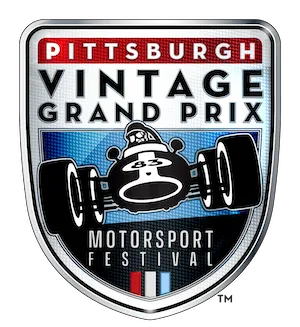Schenley Park Race Circuit
Wheel-to-wheel vintage racing through the streets of Schenley Park is unlike anything else in the country. Modern tracks are multi-million dollar, purpose-built complexes. But the hay bale lined circuit of the Pittsburgh Vintage Grand Prix remains true to the earliest days of sports car racing when competitions were held on public roads.
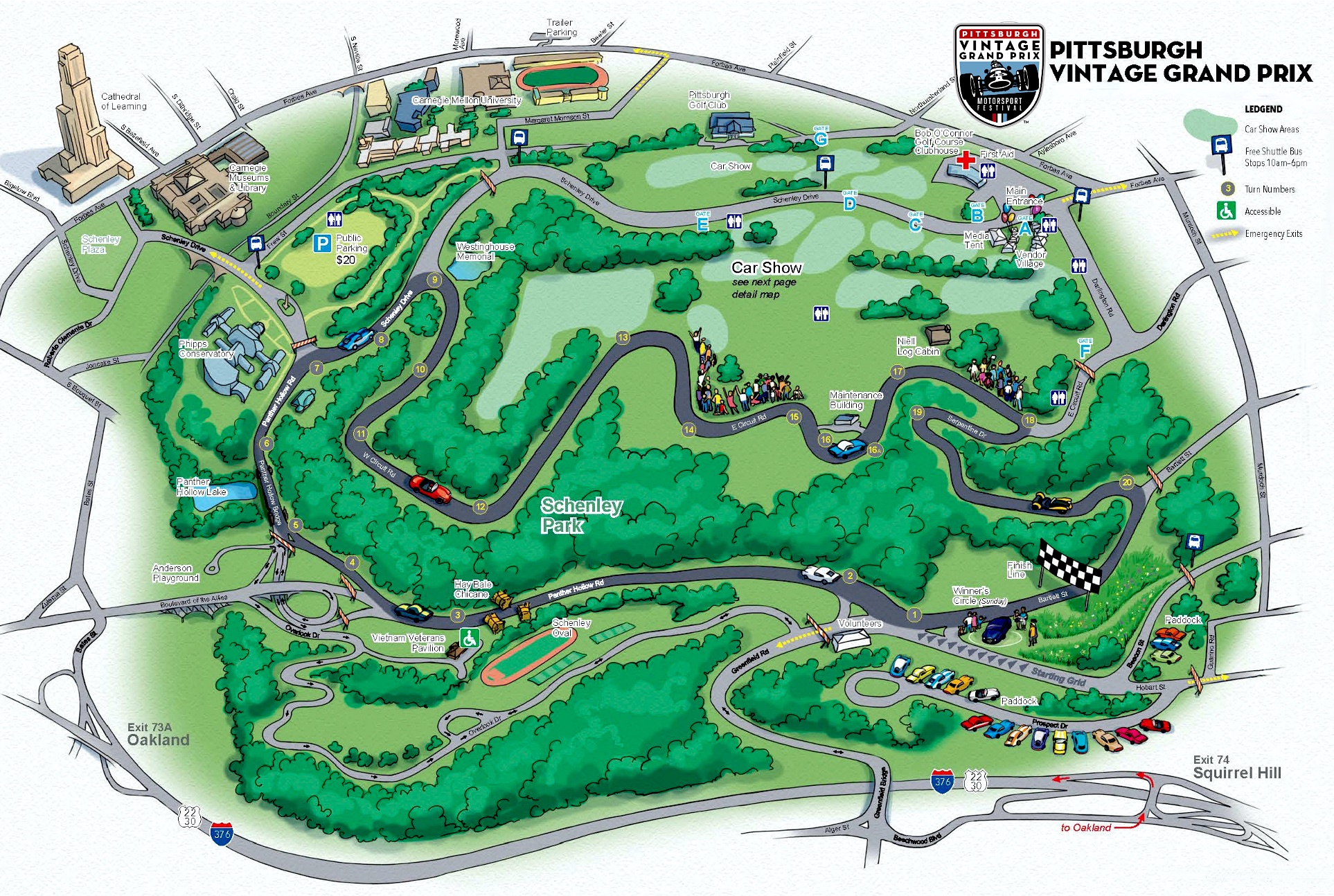
The Schenley Park street track is 2.3 miles long with 22 turns and 17 elevation changes. It is a challenging circuit that’s lined with stone walls, curbs and light poles.
Here is a turn-by-turn account of the circuit described by one of our racers
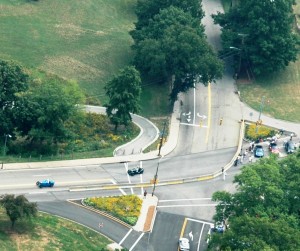
Turn 1 – Starting Off Right
Turn 1 can be a very fast corner, with speeds approaching 60 mph and some very unsettling pavement bumps. With no run-off opportunity, drivers risk slapping the back end of the car against the Jersey barriers as they accelerate up the hill. As turn 2 is a subtle left and leads into the fastest straight section of the track, a fast exit speed is critical to competitive laps. The straight gets full-throttle acceleration, and drivers try to favor the middle of the street to protect their position from passing cars. The cars reach top speed as they reach a slight crest that hides the approach to the infamous chicane.
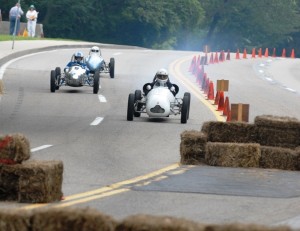
Turn 3 – Haybale Chicane
A lot of speed must be scrubbed off to get through the quick left-right-left of the haybales – definitely a single-file affair. The hay won’t hurt you car but will definitely slow you down.
The chicane is meant to slow drivers down as they begin to speed downhill toward the Panther Hollow Bridge
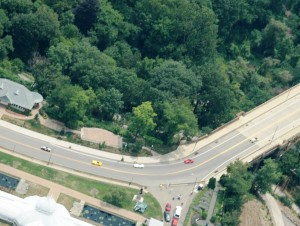
Turn 6 – Panther Hollow Bridge to Phipps
Upon exit the speed quickly – but cautiously – builds again as drivers thread between drain culverts which threaten any wheel that strays too close. The course then shoots across Panther Hollow Bridge to Phipps Conservatory and Turn 6.
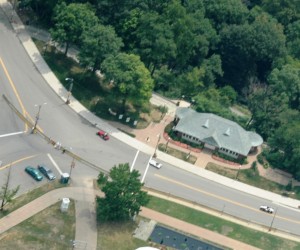
Turn 7 – Schenley Visitor’s Center
Between turns 6 and 9 – Westinghouse Pond – a lot of fun can be had. Drivers hug the right curb, trying to squeeze between rough pavement to the left and the curbing on the right as they sweep past Phipps Conservatory and onto Schenley Drive. With careful positioning, what looks to be an eclectic mix of pavements, turns, and curbs become one smooth arc in which to build up speed.

Turn 9 – Westinghouse Fountain
The approach to turn 9 is a good passing zone. Cars enter far to the left, and those who can out-brake others can steal the corner. Turns 9 through 12 are home to some of the most treacherous sections of the course.
If it has rained, this section stays wet for a long time. The cars do a long left turn, which can almost be straightened out but for a tree just inches from the road’s edge. Then, hard braking. Very hard braking.
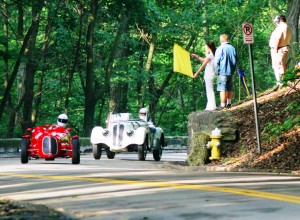
Turn 11
This is a blind 90-degree off-camber left-hander – a bad place for a car to get unsettled. Through this section, experienced drivers use a Pittsburgh line – a path developed around the surface’s 3-dimensional geometry. As the track sweeps around a long, stone-lined left turn, drivers stay left and work with the road’s camber, using about three-quarter throttle. Once it opens up, it’s a very fast climb to the brutal turn 13.
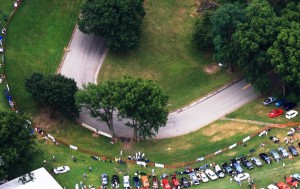
Turn 13 – German Hill
Turn 13 brings the drivers out of the tunnel of trees and up onto the golf course packed with spectators and tents. This hard right-hander demands a late apex that avoids a storm grate – right in the middle of the best line. Many drivers power out of this uphill turn into a well-controlled drift that nearly kisses the outside curb as they storm up to Turn 14.
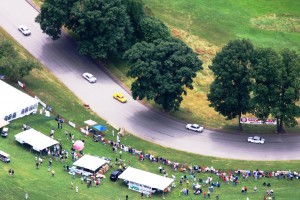
Turn 15 – VIP Pavilion
From 14 through 17, drivers again take advantage of the banking the crowned road provides. Most of the road doesn’t get used because the cars simply cannot stick to the pavement that meanders through the golf course. Experienced drivers develop a rhythm through here which allows the car to flow. Turn 15 is a level left to right turn in the heart of the golf course.
Turn 15 is also the location where the Sunoco Vintage Rides are done on Saturday’s lunch break. Spectators get a chance to ride in a race car for a $40 charitable donation.
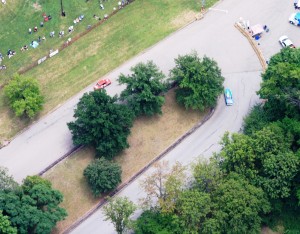
Turn 18 – Serpentine Entrance
Turn 18 becomes a test of brakes and nerves as drivers dive for the inside. The collapse of the wall in 2019 forced us into a single lane and we installed jersey barriers making it a yellow flag sigle lane throughout.
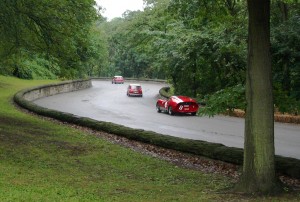
Turn 19 – Switchback
The sharp, downhill switchback of Turn 19 requires drivers to actually look over their shoulder to see its apex. To complicate matters, both sides of the track are lined with stone walls. Immediately upon exit, drivers build speed into the gentle turn of 19a deep within the walls of the serpentine. Turn 19a is not too difficult but you must get into position as you approach the hard and blind turn 20.
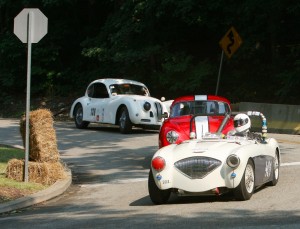
Turn 20 – Don’t Stop
This is the last turn on the circuit and it’s a real good one. It is slightly downhill and a hairpin at that. This 90 degree right turn (no need to pause at the stop sign) leads you onto the straightaway to the finish line.
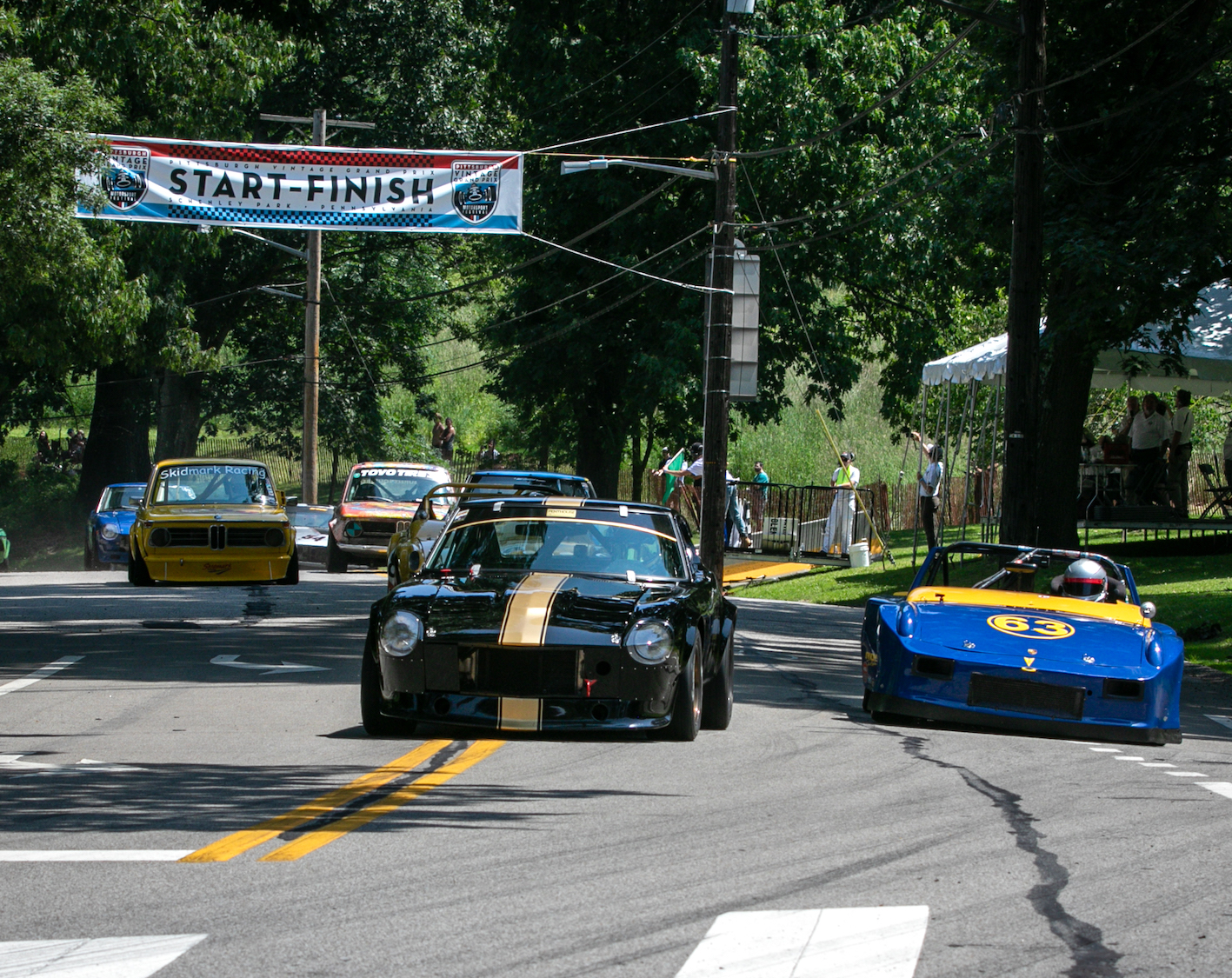
Start/Finish Line
The final turn unwinds just in time for a very short straight approaching the Start/Finish line. Again, drivers use the camber change to set up the car, and then pick up speed and drift over to the other side of the road.
Approaching Start-Finish, drivers must again be mindful of sewer grates and manhole covers. Staying to the left over the line sets the car up for Turn 1, and they get to do it all over again!
The “Schenley” Line
Motorsports fans are familiar with “the line” – the ideal path through turns that allows a driver to take a turn at the fastest speed and the least amount of time. Purpose-built tracks have fully-banked turns which allow the driver to use the entire track width. So, why do cars at Schenley not use the whole track?
This is another nuance, which makes Schenley so desirable by drivers nationwide. Its “line” is unique, and reminiscent of the days when street racing was the norm. For 363 days of the year, our track is used by commuters and park patrons. These public roads are crowned to assist in drainage. Consequently, one-half of nearly every turn banks away from the turn. This renders half of the track unusable in these places, which leads to the unusual-looking “lines” our drivers take.
